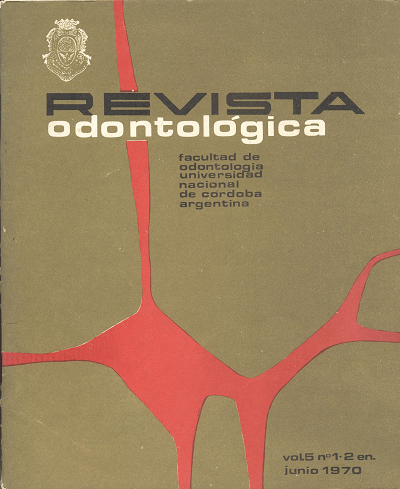Comprobación experimental del paso de las tetraciclinas por la placenta y su posterior incorporación a los tejidos dentarios
Keywords:
Tetracyclines, Experimental Development, TissuesAbstract
From the observation made of the lot of rats employed and. of the material used (histologic cuts of the jaws of 15 breedings freshly born, 50 hemi-jaws and upper canines, 50 cutsfor griding-in of lower canines and 13 of the firts lower molars; plus same quantity of material coming from 25 witness breedings), the following facts spur out:
1) In the histologic cuts of jaws obtained from freshly born breedings, fluorescency has been observed in all tissues in the 100% of the cases. No bright differential chracteristics have
been observed in type and range of fluorescency given by the three tethracyclines used.
2) In the bone ot the jaws the fluoresc: ency was total. disappearing PU)gressively with the age. The rriaj'or persistency has been observed in the cortical of the pre-molar region.
3) The dentina showed clear yellow fluoresnce in all the cases, being abie to distinguish more glittering bands which with age in increase migrated towards the incisa! with all complex toothwort and drew away progressively from the pulpa! chamber, so that, the later the investigation the nearer carne the fluorescent part to the incisa! regían.
4) In the enamel the fluorescence was variable.
5) In the paradentium and germinating regían, the fiuorescence decreased rapidly, while it was more persistent in the pulp.
6) In the material coming from breeding of 1 O to 15 days of age structural anomalies have been observed in the cuspids of the lower represented by marked incremental lines od Owen and globular dentine In the enamel of sorne canines changes in the enamel have been found
represented by hypocalcified lines
Downloads
Downloads
Issue
Section
License
Aquellos autores/as que tengan publicaciones con esta revista, aceptan los términos siguientes:
- Los autores/as conservarán sus derechos de autor y garantizarán a la revista el derecho de primera publicación de su obra, el cuál estará simultáneamente sujeto a la Licencia de reconocimiento de Creative Commons que permite a terceros:
- Compartir — copiar y redistribuir el material en cualquier medio o formato
- La licenciante no puede revocar estas libertades en tanto usted siga los términos de la licencia
- Los autores/as podrán adoptar otros acuerdos de licencia no exclusiva de distribución de la versión de la obra publicada (p. ej.: depositarla en un archivo telemático institucional o publicarla en un volumen monográfico) siempre que se indique la publicación inicial en esta revista.
- Se permite y recomienda a los autores/as difundir su obra a través de Internet (p. ej.: en archivos telemáticos institucionales o en su página web) después del su publicación en la revista, lo cual puede producir intercambios interesantes y aumentar las citas de la obra publicada. (Véase El efecto del acceso abierto).

